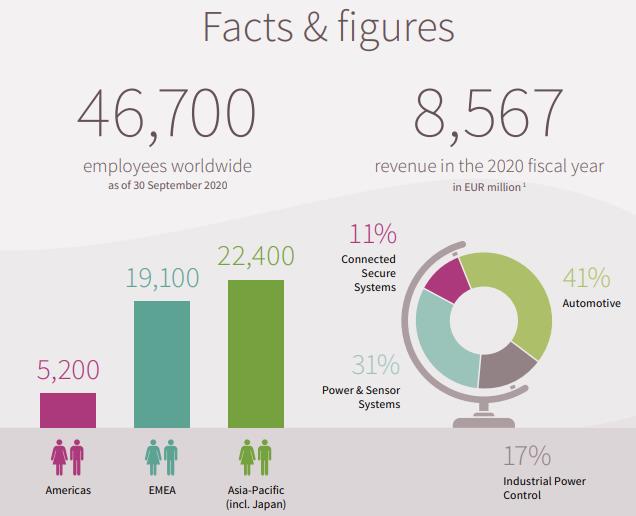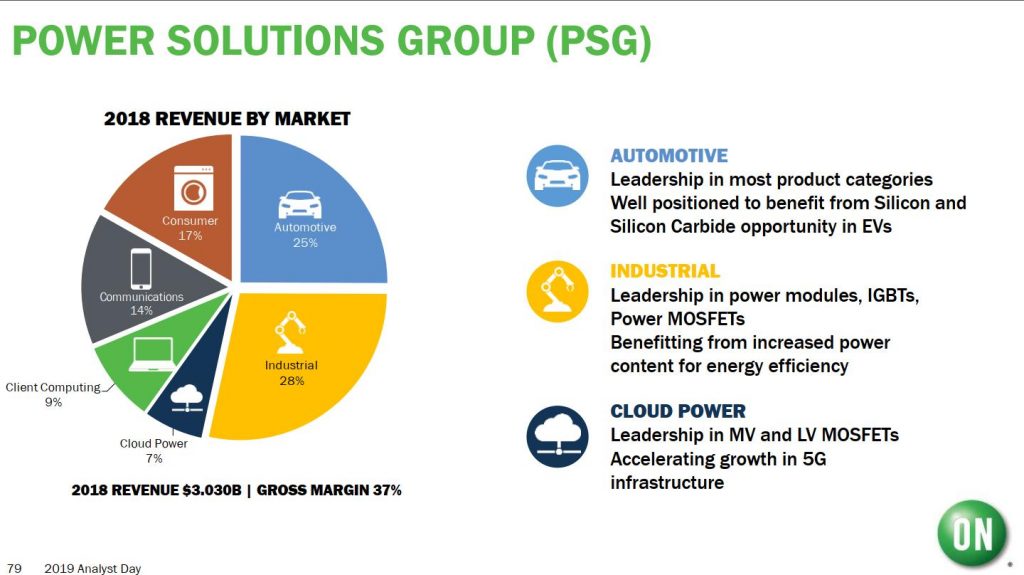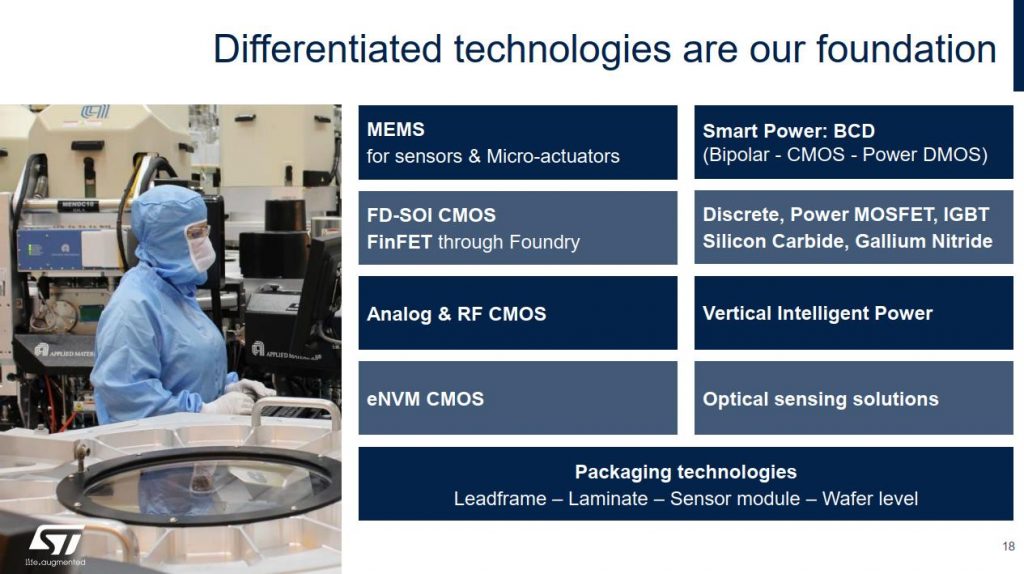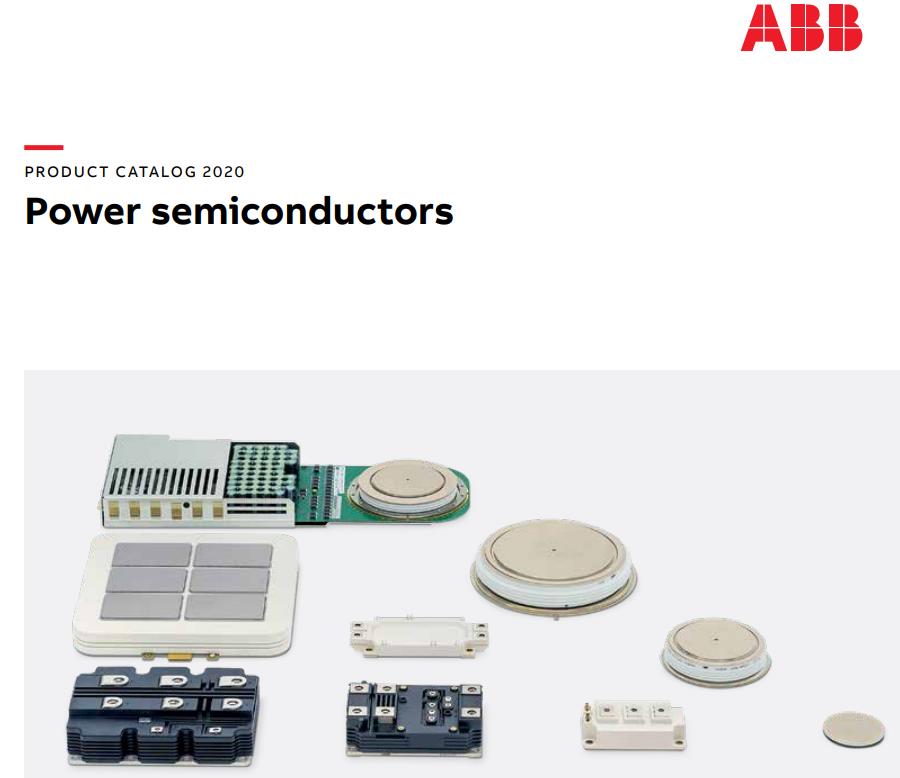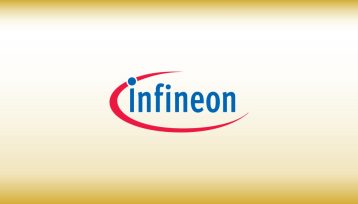Nowadays power semiconductors are widely used almost in every industry of human activity. Our home appliances include power semiconductors, electric cars include power semiconductors, and airplanes and space ships include power semiconductors. Today I would like to share with you some information about the major manufacturers of power semiconductors.
Infineon
Infineon Technologies AG is one of the German manufacturers of power semiconductors founded in 1999, when the semiconductor operations of the former parent company Siemens AG were spun off. It has about 47,400 employees and is one of the ten largest semiconductor manufacturers worldwide. It is market leader in automotive and power semiconductors.
The company markets semiconductors and systems for automotive, industrial, and multimarket sectors, as well as chip card and security products.
After several restructurings, Infineon today comprises four business areas
Automotive (ATV)
Infineon provides semiconductor products for use in powertrains (engine and transmission control), comfort electronics (e.g., steering, shock absorbers, air conditioning) as well as in safety systems (ABS, airbags, ESP). The product portfolio includes microcontrollers, power semiconductors and sensors.
Industrial Power Control (IPC)
The industrial division of the company includes power semiconductors and modules which are used for generation, transmission and consumption of electrical energy. Its application areas include control of electric drives for industrial applications and household appliances, modules for renewable energy production, conversion and transmission.
Power & Sensor Systems (PSS)
The division Power & Sensor Systems sums up the business with semiconductor components for efficient power management or high-frequency applications. Those find application in lighting management systems and LED lighting, power supplies for servers, PCs, notebooks and consumer electronics, custom devices for peripheral devices, game consoles, applications in medical technology, high-frequency components having a protective function for communication and tuner systems and silicon MEMS microphones.
Connected Secure Systems (CSS)
The CSS business provides microcontrollers for mobile phone SIM cards, payment cards, security chips and chip-based solutions for passports, identity cards and other official documents. Infineon delivers a significant number of chips for the new German identity card. In addition, CSS provides solutions for applications with high security requirements such as pay television and Trusted Computing.
Mitsubishi Electric
Mitsubishi Electric Corporation was established on 15 January 1921. It is a Japanese multinational electronics and electrical equipment manufacturing company headquartered in Tokyo, Japan. It is one of the core companies of Mitsubishi and one of the biggest manufacturers of power semiconductors in Japan and the world. The products from MELCO include elevators and escalators, high-end home appliances, factory automation systems, train systems, semiconductors, digital signage, and satellites.
The Semiconductors division of the company provides
- Power modules, high-power devices
- Driver ICs
- Sensors (Contact image sensors, etc.)
- High-frequency devices
- Optical devices
- TFT-LCD modules
Power modules contribute to increased efficiency and energy savings by condensing the power chip, required for motor control and power conversion, and the control circuits into one package and by applying inverter technology to all sorts of industrial equipment.
Amidst a social background where it is indispensable to take action concerning the environment, power devices have the main role of efficiently using resources and energy in power electronics, and are thus growing increasingly more important.
Mitsubishi Electric’s main device in the hundreds-of-hertz to tens-of-kilohertz range is the insulated-gate bipolar transistor – IGBT. The company develops and markets power modules for a variety of applications, including electrical railways, manufacturing, automobiles, medical equipment and consumer products.
Vishay
Vishay Intertechnology, Inc. is one of the American manufacturers of power semiconductors and passive electronic components founded by Polish-born businessman Felix Zandman. Vishay has manufacturing plants in Israel, Asia, Europe, and the Americas where it produces rectifiers, diodes, MOSFETs, optoelectronics, selected integrated circuits, resistors, capacitors, and inductors. As of December 31, 2018, Vishay Intertechnology had approximately 24,100 full-time employees.
Vishay is one of the world’s foremost manufacturers of power MOSFETs. They have a wide range of power electronic applications, including portable information appliances, internet communications infrastructure, power integrated circuits, cell phones, and notebook computers.
Vishay Intertechnology was founded in 1962 by Polish-born Dr. Felix Zandman. The Company was named after Zandman’s ancestral village in present-day Lithuania, Veisiejai. It began operations with a patented technology that had two product lines: foil resistors and foil resistance strain gauges. In 1985, having grown from a start-up into the world’s leading manufacturer of these original products, the company began an ongoing series of acquisitions to become a broadline manufacturer of electronics components.
Since 1985, Vishay has pursued a business strategy that principally consists of the following elements: expanding within the electronic components industry, primarily through the acquisition of other manufacturers of electronic components; reducing expenses; transferring manufacturing operations to countries with lower labor costs and government-sponsored incentives; maintaining significant production facilities in regions where Vishay markets the bulk of its products; continually rolling out new products; and strengthening relationships with customers and strategic partners.
As a result of this strategy, Vishay has grown from a small manufacturer of precision resistors and resistance strain gages to one of the world’s largest manufacturers and suppliers of a broad line of electronic components.
ON Semiconductor
ON Semiconductor is a semiconductors supplier company, formerly in the Fortune 500, but dropping into the Fortune 1000 in 2020. Products include power and signal management, logic, discrete, and custom devices for automotive, communications, computing, consumer, industrial, LED lighting, medical, military/aerospace and power applications. ON Semiconductor runs a network of manufacturing facilities, sales offices and design centers in North America, Europe, and the Asia Pacific regions. Headquartered in Phoenix, Arizona, ON Semiconductor is among the worldwide top 20 semiconductor sales leaders.
ON Semiconductor was founded in 1999. The company was originally a spinoff of Motorola’s Semiconductor Components Group. It continues to manufacture Motorola’s discrete, standard analog, and standard logic devices.
In September 2016, ON Semiconductor completed the acquisition of Fairchild Semiconductor.
ON Semiconductor manufactures products in the following areas
- Custom: ASICs; Foundry Services; Custom ULP Memory; CMOS Image Sensors; Integrated passive devices
- Discrete: Bipolar Transistors; Diodes & Rectifiers; IGBTs & FETs; Thyristors
- Power Management: AC/DC Controllers & Regulators; DC-DC Controllers, Converters, & Regulators; Drivers; Thermal Management; Voltage & Current Management
- Logic: Clock Generation; Clock & Data Distribution; Memory; Microcontrollers; Standard Logic
- Signal Management: Amplifiers & Comparators; Analog Switches; Audio/Video ASSP; Digital Potentiometers; EMI/RFI Filters; Interfaces; Optical, Image, & Touch Sensors
STMicroelectronics
STMicroelectronics is a Swiss-domiciled multinational electronics and semiconductor manufacturer headquartered in Geneva, Switzerland. It is commonly called ST, and it is Europe’s largest semiconductor chip maker based on revenue. While STMicroelectronics corporate headquarters and the headquarters for EMEA region are based in Geneva, the holding company, STMicroelectronics N.V. is incorporated in the Netherlands. The company originates from France and Italy.
The company’s US headquarters is in Coppell, Texas. Headquarters for the Asia-Pacific region is in Singapore whilst Japan and Korea operations are headquartered in Tokyo. The company headquarters for the Greater China region is in Shanghai.
ST was formed in 1987 by the merger of two government-owned semiconductor companies: SGS Microelettronica (Società Generale Semiconduttori) of Italy and Thomson Semiconducteurs, the semiconductor arm of France’s Thomson.
SGS Microelettronica originated in 1972 from a previous merger of two companies – ATES (Aquila Tubi e Semiconduttori), a vacuum tube and semiconductor maker headquartered in the Abruzzese city of l’Aquila, which in 1961 changed its name to Azienda Tecnica ed Elettronica del Sud and relocated its manufacturing plant to the outskirts of the Sicilian city of Catania, and Società Generale Semiconduttori, which was founded in 1957 by Adriano Olivetti.
Thomson Semiconducteurs was created in 1982 by the French government’s widespread nationalisation of industries. It included the semiconductor activities of the French electronics company Thomson. In 1985 it bought Mostek, a US company founded in 1969 as a spin-off of Texas Instruments, from United Technologies; Silec, founded in 1977; Eurotechnique founded in 1979 in Rousset, Bouches-du-Rhône as a joint-venture between Saint-Gobain of France and US-based National Semiconductor; EFCIS, founded in 1977; and SESCOSEM, founded in 1969.
At the time of the merger the company was named SGS-THOMSON but took its current name in May 1998 following Thomson’s sale of its shares. After its creation ST was ranked 14th among the top 20 semiconductor suppliers with sales of around US$850 million.
The company has participated in the consolidation of the semiconductor industry since its formation, with acquisitions including
- 4 Field-Programmable Microcontroller Peripheral from Wafer Scale Integration PSD311
- 1989, British company Inmos known for its transputer microprocessors from parent Thorn EMI
- In 1994, Canada-based Nortel’s semiconductor activities
- 2000, WaferScale Integration Inc. (WSI, Fremont, California), a vendor of EPROM and flash memory-based programmable system-chips
- In 2002, Alcatel’s Microelectronics division, which along with the incorporation of smaller ventures such as UK company, Synad Ltd, helped the company expand into the Wireless-LAN market
- In 2007, US-based Genesis Microchip. Genesis Microchip is known for their strength in video processing technology (Faroudja) and has design centres located in Santa Clara, Toronto, Taipei City, Taiwan R.O.C. and Bangalore
On December 8, 1994, the company completed its initial public offering on the Paris and New York stock exchanges. Owner Thomson SA sold its stake in the company in 1998 when the company also listed on the Borsa Italiana in Milan.
In 2002, Motorola and TSMC joined ST and Philips in a new technology partnership. The Crolles2 Alliance was created with a new 12″ wafer manufacturing facility located in Crolles (France).
By 2005, ST was ranked fifth, behind Intel, Samsung, Texas Instruments and Toshiba, but ahead of Infineon, Renesas, NEC, NXP, and Freescale. The company was the largest European semiconductors supplier, ahead of Infineon and NXP.
Early in 2007, NXP (formerly Philips Semiconductors) and Freescale (formerly Motorola Semiconductors) decided to stop their participation in Crolles2 Alliance. Under the terms of the agreement the Alliance came to an end on December 31, 2007.
On May 22, 2007, ST and Intel created a joint venture in the memory application called Numonyx. This new company merged ST and Intel Flash Memory activities. Semiconductor market consolidation continued with ST and NXP announcing on April 10, 2008, the creation of a new joint venture of their mobile activities, with ST owning 80% of the new company and NXP 20%. This joint venture began on August 20, 2008.
On February 10, 2009, ST Ericsson, a joint venture bringing together ST-NXP Wireless and Ericsson Mobile Platforms, was established.
In 2011, ST announced the creation of a joint lab with Sant’Anna School of Advanced Studies. The lab will focus on research and innovation in bio-robotics, smart systems and microelectronics. Past collaborations with Sant’Anna School of Advanced Studies included DustBot, a platform that integrated self-navigating “service robots” for waste collection.
ST Ericsson was a multinational manufacturer of wireless products and semiconductors, supplying to mobile device manufacturers. ST-Ericsson was a 50/50 joint venture of Ericsson and STMicroelectronics established on February 3, 2009, and dissolved on August 2, 2013. Headquartered in Geneva, Switzerland, it was a fabless company, outsourcing semiconductor manufacturing to foundry companies.
Unlike fabless semiconductor companies, STMicroelectronics owns and operates its own semiconductor wafer fabs. The company owned five 8 inch (200 mm) wafer fabs and one 12 inch (300 mm) wafer fab in 2006. Most of the production is scaled at 0.18 µm, 0.13 µm, 90 nm and 65 nm (measurements of transistor gate length). STMicroelectronics also owns back-end plants, where silicon dies are assembled and bonded into plastic or ceramic packages.
ABB Semiconductors
ABB’s history dates back to the late 1800’s when electrical engineering companies, ASEA and BBC (Brown Boveri & Cie), were formed during Europe’s industrial revolution. After introducing electrical power transmission, rail and industrial technologies, these two pioneering brands merged in 1988 to create ABB. In the following three decades the company continued to develop industry-leading power and automation technologies through a combination of R&D and tactical acquisitions.
Over 100-years ago a journey into power electronics started in Switzerland with the production of mercury-arc rectifiers. Today, ABB Semiconductors offers one of the most diverse semiconductor offerings including thyristors, diodes, GTOs, IGCTs and IGBTs, manufactured at Lenzburg, Switzerland and Prague, Czech Republic facilities.
With research laboratory in Baden-Dättwil, Switzerland developing the next generation power semiconductors, ABB is set to continue pushing the boundaries of power electronics innovation. The advanced semiconductor technology has created almost unlimited control possibilities in HVDC transmission systems.
ABB lies at the heart of traction converters driving high speed trains, metros and diesel-electric locomotives. And the many pumps, fans, roller tables, hoist and winches found through-out industry, rely on ABB power semiconductors. ABB remains one of the biggest manufacturers of high power semiconductors.
In 2020, Hitachi and ABB’s Power Grids’ business came together in a joint venture to create a new global leader in pioneering and digital technologies. As individual companies, both had been innovating and improving technology for over a century. Together, as Hitachi ABB Power Grids, the company will bring forward and build on this remarkable heritage to tackle today’s challenges facing business and society.
Littelfuse
Littelfuse, Inc is a multinational electronic manufacturing company based in Chicago, Illinois. The company primarily produces circuit protection products but also manufactures a variety of electronic switches, semiconductors and automotive sensors. Littelfuse was founded in 1927. In addition to its Chicago, Illinois, world headquarters, Littelfuse has more than 40 sales, distribution, manufacturing and engineering facilities in the Americas, Europe and Asia.
Littelfuse is a global manufacturer of leading technologies in circuit protection, power control, and sensing. Serving over 100,000 end customers, its products are found in automotive and commercial vehicles, industrial applications, data and telecommunications, medical devices, consumer electronics, and appliances. 11,000 worldwide associates partner with customers to design, manufacture, and deliver innovative, high-quality solutions for a safer, greener, and increasingly connected world.
Littelfuse is the developer of AutoFuse, the first blade-type automotive fuse.
Littelfuse designs and manufactures circuit protection products for the electronics, automotive and electrical industries. The company operates between three business unit segments: Electronics, Industrial, and Automotive. Products include: fuses and protectors, suppressors, gas discharge tubes, electronic switches, semiconductors, solenoids, battery management devices, and protective relays.
Littelfuse has acquired multiple companies since 1999
- 1999 – Harris Suppression Products
- 2002 – Semitron
- 2003 – Teccor, a manufacturer of circuit and overvoltage protection products
- 2004 – Heinrich Industrie, a German manufacturer of circuit protection products, including the WICKMANN Group, Efen and Pudenz brands
- 2006 – Taiwan-based silicon manufacturer Concord Semiconductor, Inc. and Catalina Performance Accessories, which manufactures and distributes blade-type automotive fuses
- 2008 – Shock Block Corporation and Startco Engineering Ltd., companies that develop and manufacture ground fault protection technology
- 2008 – Startco Engineering, maker of ground-fault protection products and custom-power distribution centers that are used in industrial manufacturing and mining applications
- 2010 – Cole Hersee, a maker of power management products, heavy duty electromechanical and switches for commercial vehicles
- 2011 – Selco A/S, a Danish company, which produces electrical equipment for use in maritime and industrial environments
- 2012 – Accel AB, a Swedish company that manufactures advanced automotive switches and senors, and Terra Power Systems, which manufactures electrical components for heavy-duty vehicles and trucks
- 2013 – Hamlin Inc., an automotive sensors manufacturer
- 2014 – SymCom, a power, voltage, and current monitor developer and manufacturer
- 2015 – JRS MFG. LTD., a custom engineered products developer and manufacturer, such as metal-clad, metal-enclosed, and arc-resistant switchgear, E-Houses, mine power centers and mining substations
- 2016 – TE Connectivity’s circuit protection business
- 2016 – IGBT and TVS divisions of ON Semiconductor, a semiconductors supplier company
- 2017 – U.S. Sensor, Manufacturer of Temperature Sensors
- 2017 – IXYS Corp., one of the biggest manufacturers of power semiconductors in the US
- 2018 – Monolith Semiconductor Inc., a silicon carbide switch developer and manufacturer
Dynex Semiconductor
Dynex Semiconductor based in Lincoln, England, United Kingdom is a global supplier of products and services specializing in the field of power semiconductor devices and silicon on sapphire integrated circuit products. The power products they manufacture include IGBTs, various types of thyristor and GTOs.
Along with several other industry partners, Dynex is a member of the National Microelectronics Institute of the University of Surrey. Dynex also supports research in power conversion electronics for hybrid vehicles with two other British universities, Durham University and the University of Warwick.
The Dynex power semiconductor business was originally established in Lincoln over 50 years ago when it was known as AEI Semiconductors Ltd. At that time, the business introduced some of the first silicon-based power semiconductor components in the world. Since then it acquired the power semiconductor interests, technologies and products from some major names such as GEC, SGS-Thomson, Alstom and Marconi Electronic Devices (MEDL).
In 2008, 75% of Dynex Power shares were acquired by Chinese manufacturer Zhuzhou CSR Times Electric Co., Ltd., a subsidiary of CSR Corporation Limited.
Semikron
Semikron is a German-based independent manufacturer of power semiconductor components. The company was founded by in 1951 Dr. Friedrich Josef Martin in Nuremberg. In 2019, the company has a staff of more than 3,000 people in 25 subsidiaries (world-wide) with production sites in Germany, Brazil, China, France, India, Italy, Slovakia and the USA.
Semikron is a provider of integrated circuits, discrete semiconductors, transistor, diode and thyristor power modules, power assemblies and systems for markets such as industrial drives, wind and solar, hybrid and electric vehicles, the rail industry and power supplies. According to a survey carried out by BTM Consult ApS, the total wind power capacity installed until 2009 was 122 gigawatts. Out of this, 57 gigawatts comprise power semiconductors from Semikron.
In the field of diode/thyristor modules, Semikron is the market leader with a 30% share of the worldwide market.
Semikron’s product range consists of 11,600 different power semiconductors from 1 kW to 10 MW, including chips, discrete diodes/thyristors, power modules (IGBT/MOSFET/diode /thyristor/CIB/IPM), driver and protection components and integrated subsystems.
Amongst other developments Semikron invented the world’s first isolated power module, the Semipack, of which 56 million are presently in use.
Semikron in Figures
- 534,000,000 EURO turnover in 2018
- approx. 3,000 employees worldwide
- 25 operating companies worldwide
- 9 production sites
- Over 1,500,000 electric fork lifts are powered by Semikron Systems
- More than 53,000 hybrid- and electric buses are equipped with Semikron technology
- Over 200,000 Electrical Vehicles in the streets
- More than 40 million MiniSKiiP in the field
- 35% share of yearly installed wind turbines
Fuji Electric
Fuji Electric Co., Ltd., operating under the brand name FE, is a Japanese electrical equipment company, manufacturing pressure transmitters, flowmeters, gas analyzers, power semiconductors, controllers, inverters, pumps, generators, ICs, motors, and power equipment.
Fuji Electric was established in 1923 as a capital and technology tie-up between Furukawa Electric, a spinoff from Furukawa zaibatsu company, and Siemens AG. The name “Fuji” is derived from Furukawa’s “Fu” and Siemens’ “Ji”, since German pronunciation of Siemens is written jiimensu in Japanese romanization.
In 1935, Fuji Electric spun off the telephone department as Fuji Tsushinki (lit. Fuji Communications Equipment, now Fujitsu).
Divisions and products
- Transmission and distribution equipment — joint venture with Schneider Electric
- Industrial power supply equipment
- Industrial drive systems
- Heating and induction furnace equipment
- Plant control and measurement systems
- Radiation monitoring systems
- Power electronics
- Inverters/servo systems
- Transportation power electronics
- Uninterruptible power supply systems
- Power conditioners
- Power distribution and control equipment
- Electronic devices
- Power semiconductors
- etc.
ROHM
Rohm Semiconductor is a Japanese electronic parts manufacturer based in Kyoto, Japan. It was incorporated as Toyo Electronics Industry Corporation by Kenichiro Sato on September 17, 1958.
The company was initially known as R.ohm, which was derived from R for resistors, the original product, plus ohm, the unit of measure for resistance. The “R” now also stands for “Reliability”. “Quality First” is ROHM’s corporate policy.
The name of the company was officially changed to Rohm in 1979 and then changed again to Rohm Semiconductor in January 2009.
When Rohm was established, resistors were its main product. Later, the company began manufacturing semiconductors. ICs and discrete semiconductors now account for about 80% of Rohm’s revenue.
Through 2012, Rohm was among the top 20 semiconductor sales leaders.
ROHM was established in Kyoto in 1958 as initially a manufacturer of small electronic components. In 1967 production was expanded to include transistors and diodes, and in 1969 ICs and other semiconductor products were added to the lineup. Two years later (in 1971), going against conventional Japanese business culture, the company entered the US market by establishing a sales office and IC design center in Silicon Valley.
Through the hard work and passionate dedication of its young work force, business flourished, causing the industry to take notice. ROHM’s expansion overseas soon became a template for other companies and eventually was accepted as common business practice.
Toshiba
Toshiba Corporation is a Japanese multinational conglomerate headquartered in Minato, Tokyo. Its diversified products and services include power, industrial and social infrastructure systems, elevators and escalators, electronic components, semiconductors, hard disk drives, printers, batteries, lighting, logistics, as well as IT solutions such as quantum cryptography. It was one of the biggest manufacturers of personal computers, consumer electronics, home appliances, and medical equipment.
As a semiconductor company and the inventor of flash memory, Toshiba had been one of the top 10 in the chip industry until its flash memory unit was spun off as Toshiba Memory, later Kioxia, in the late 2010s.
Toshiba was founded in 1939 as Tokyo Shibaura Denki K.K. (Tokyo Shibaura Electric Co., Ltd) through the merger of Shibaura Seisaku-sho (founded in 1875) and Tokyo Denki (founded in 1890). The company name was officially changed to Toshiba Corporation in 1978.
Having been a technology company with a long history and sprawling businesses, Toshiba has been a household name in Japan and looked upon as a symbol of the country’s technological prowess.
Tanaka Seisakusho (Tanaka Engineering Works) was the first company established by Tanaka Hisashige, one of the most original and productive inventor-engineers during the Tokugawa/Edo period. Established in July 1875, it was the first Japanese company to manufacture telegraph equipment. It also manufactured switches, and miscellaneous electrical and communications equipment.
The company was inherited by Tanaka’s adopted son, and later became half of the present Toshiba company. Several people who worked at Tanaka Seisakusho or who received Tanaka’s guidance at a Kubusho (Ministry of Industries) factory later became pioneers themselves.
These included Miyoshi Shōichi who helped Fujioka make the first power generator in Japan and to establish a company, Hakunetsusha to make bulbs; Oki Kibatarō, the founder of the present Oki Denki (Oki Electric Industry); and Ishiguro Keizaburō, a co-founder of the present Anritsu.
After the demise of the founder in 1881 Tanaka Seisakusho became partly owned by General Electric and expanded into the production of torpedoes and mines at the request of the Imperial Japanese Navy, to become on the largest manufacturing companies of the time.
However, as the Navy started to use competitive bids and then build its own works, the demand decreased substantially and the company started to lose money. The main creditor to the company, Mitsui Bank, took over the insolvent company in 1893 and renamed it Shibaura Seisakusho (Shibaura Engineering Works).
In 1910, it formed a tie-up with General Electric in the US, which, in exchange for technology acquired about a quarter of the shares of Shibaura. With this investment, GE now had a stake in both Tokyo Denki and Shibaura Seisakusho – two companies that had a complementary line of products in the light as well as heavy electrical equipment.
Both companies were merged in 1939 to create Tokyo Shibaura Denki (Tokyo Shibaura Electric Company, now Toshiba). The relation with GE continued until the beginning of the war and, after the war, resumed in 1953 with GE’s 24 percent shareholding. This percentage has, however, decreased substantially since then.
Hakunetsusha was a company established by Shōichi Miyoshi and Fujioka Ichisuke, two of Japan’s industrial pioneers during the Tokugawa/Edo period. It specialized in the manufacture of light bulbs. The company was established in 1890 and started out by selling bulbs using bamboo filaments.
In 1905 the company was renamed Tokyo Denki (Tokyo Electric) and entered into a financial and technological collaboration with General Electric of the US. General Electric acquired 51 percent share of ownership, sent a vice president, and provided the technology for bulb-making. Production equipment was bought from GE and Tokyo Denki soon started selling its products with GE’s trademark.
In 1939, Tokyo Denki and Shibaura Seisakusho were merged to form Tokyo Shibaura Denki (Tokyo Shibaura Electric Company, now Toshiba).
The group expanded rapidly, driven by a combination of organic growth and by acquisitions, buying heavy engineering, and primary industry firms in the 1940s and 1950s. In 1950, Tokyo Shibaura Denki was renamed Toshiba.
In October 2020, Toshiba made a decision to pull out of the system LSI business citing mounted losses while reportedly mulling on the sale of its semiconductor fabs as well.
Of course, worldwide there are many more manufacturers of power semiconductors working in various segments of power electronics market. However, the listed above companies hold the bigger part of power semiconductors market, and are considered to be the major manufacturers of power semiconductors.
Stay tuned for more power semiconductors and electronics updates. Go to Marketing in Power Electronics section of the website to learn more about the industry.

